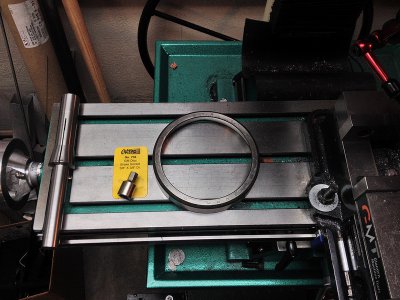- Joined
- Nov 8, 2013
- Messages
- 21
Being a newbie, my question is what are the list of priorities to get me running basic milling operations on this machine out of the box? I have to buy tooling as I get disposable cash, so I can’t get everything at once unfortunately. I’m thinking a vice, hold-down clamps, and an end mill holder? Perhaps a test indicator to square everything up? Let me know if there’s something even more basic I’m missing.
You need light to see. Find some good gooseneck lamp that swivels around the cutting edge of the tooling.
Make a tool holder to hold the different wrenches used to adjust the HF mill's table height, speeds, drawbar, and to hold your files, safety glasses, oil can, rags, paint brush, etc.
Set up a trash can near by.
Find a cheapoo vacuum to suck the chips out of the Tee-slots and keep it near the mill
Start thinking about how to motorize the table's hand wheels. Turning those hand wheels gets old quick.
Set up a work table close by so that you don't nick up your table by putting hard sharp things on it rather than the work table.
Look on eBay for the kids selling their granddaddy's machine shop tooling.
You need light to see. Find some good gooseneck lamp that swivels around the cutting edge of the tooling.
Make a tool holder to hold the different wrenches used to adjust the HF mill's table height, speeds, drawbar, and to hold your files, safety glasses, oil can, rags, paint brush, etc.
Set up a trash can near by.
Find a cheapoo vacuum to suck the chips out of the Tee-slots and keep it near the mill
Start thinking about how to motorize the table's hand wheels. Turning those hand wheels gets old quick.
Set up a work table close by so that you don't nick up your table by putting hard sharp things on it rather than the work table.
Look on eBay for the kids selling their granddaddy's machine shop tooling.


